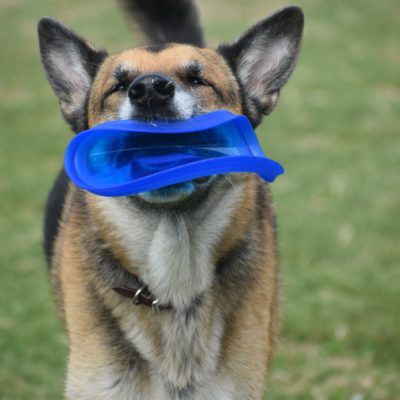December is Safe Toys and Gifts Month. This is definitely a timely topic for us. Our furry patients will be getting a lot of new playthings in their stockings this month! However, while one would like to think that any products made for Fido are guaranteed to be safe, that just isn’t the case. A local vet offers some helpful tips on choosing safe toys below.
Materials
One of the issues with toy safety is the fact that many contain toxic chemicals and materials. In fact, one study by Consumer Affairs discovered heavy metals, such as lead and chromium, in many dog toys. Some dog toys also contain latex, which contains BPA. Check the labels, and opt for things made of natural materials. Rice husk and natural rubber are two good options. They are safe to ingest, though you’d still want to call your vet if Fido eats a lot of it.
Size
Choosing toys that are the right size is also very important. A German Shepherd could choke on a plaything made for small breeds, while a Pomeranian could hurt themselves chewing on something that is made for a larger pooch. If you have a growing puppy, remember to toss out little Fido’s smaller toys as he grows.
Rawhide
We know, many pups love chewing on rawhide. It is important for Fido to have proper chew toys. However, rawhide toys can present serious choking risks. Hard rubber toys are generally going to be the safer option. If you do give your canine buddy rawhide, supervise him closely when he’s gnawing on it, and discard it when it starts getting worn. Ask your vet for more information.
Tennis Balls
It may be cute seeing Fido happily running after tennis balls, but be careful. These are extremely dangerous for large breeds, as they present potentially-fatal choking risks. Consider teaching your furry friend the commands to Leave It and Drop It. Even if you don’t give your pooch tennis balls at home, he could find one at the dog park!
Holes
You’ll also need to be careful of toys with holes in them. Because of the suction, your canine pal could potentially get his tongue stuck in them. Kong toys are quite safe, but again, you’ll need to pick the right size. Ask your vet for specific advice.
Do you have questions about dog toys? Contact us, your local animal clinic in Live Oak, FL!



